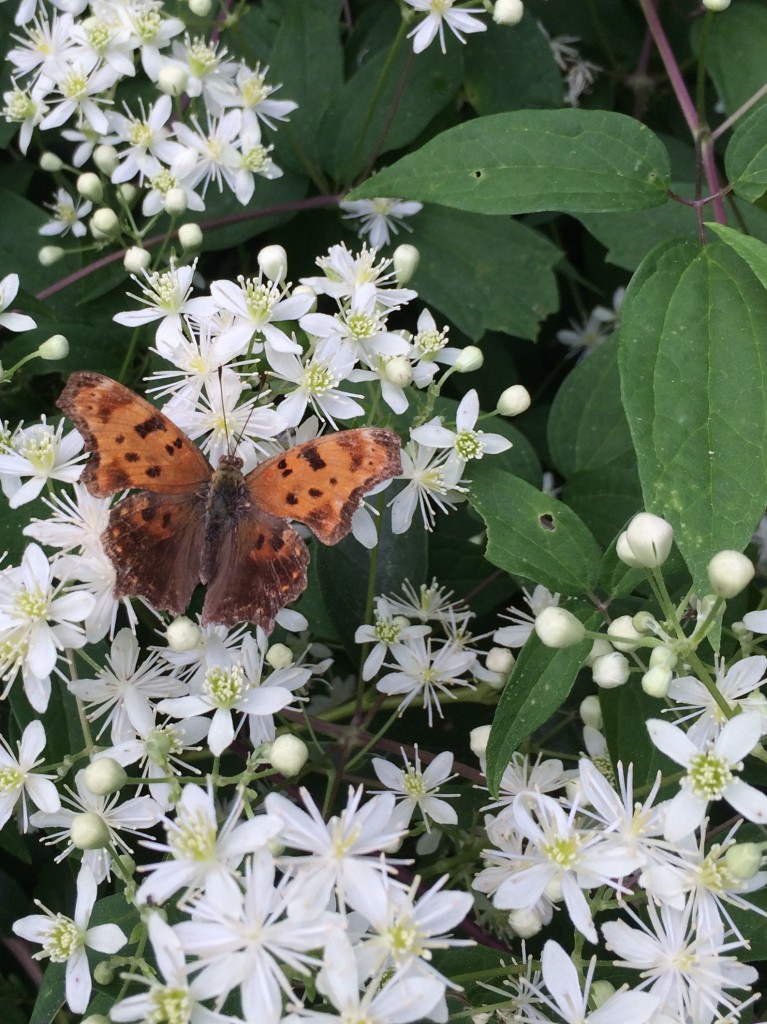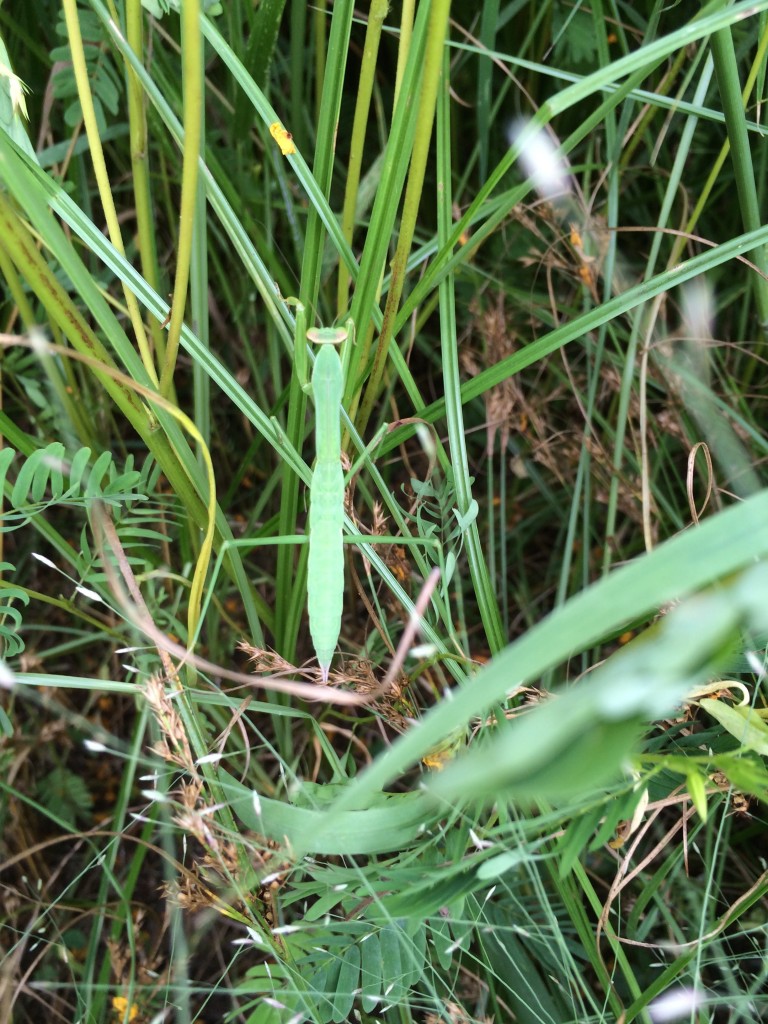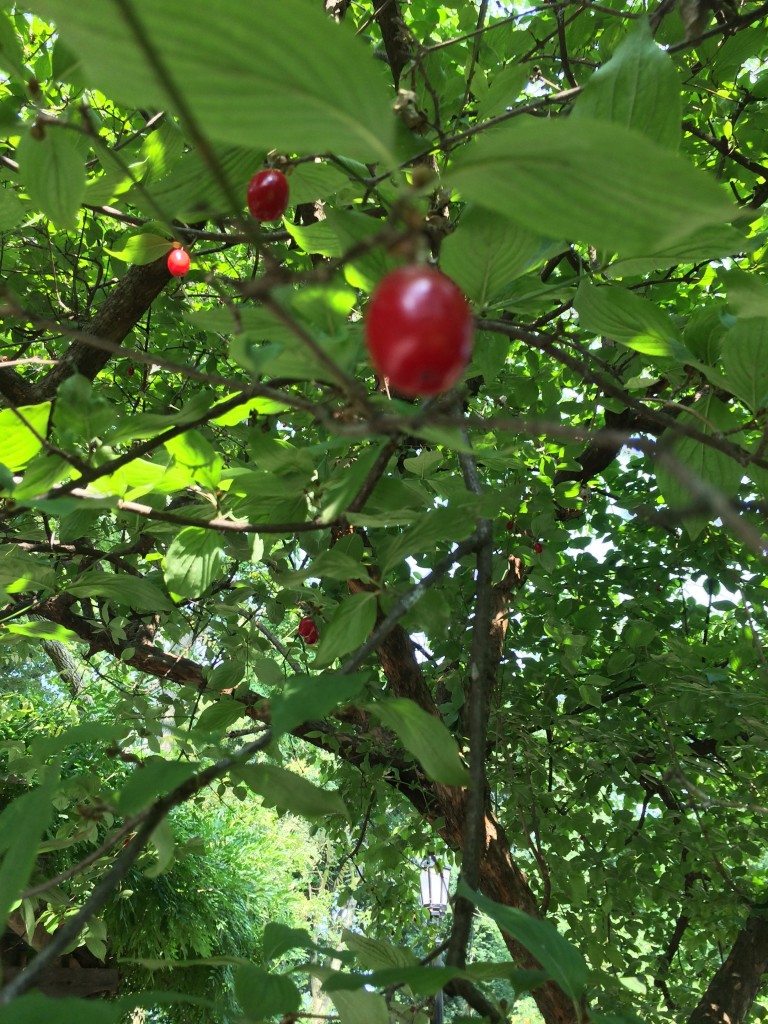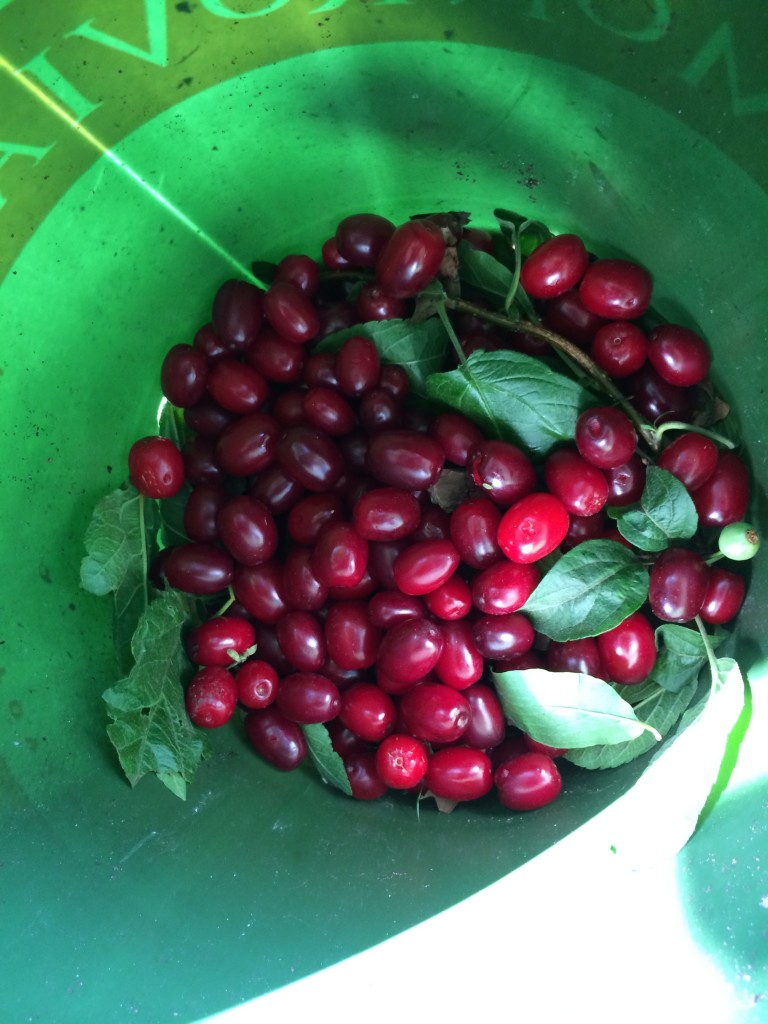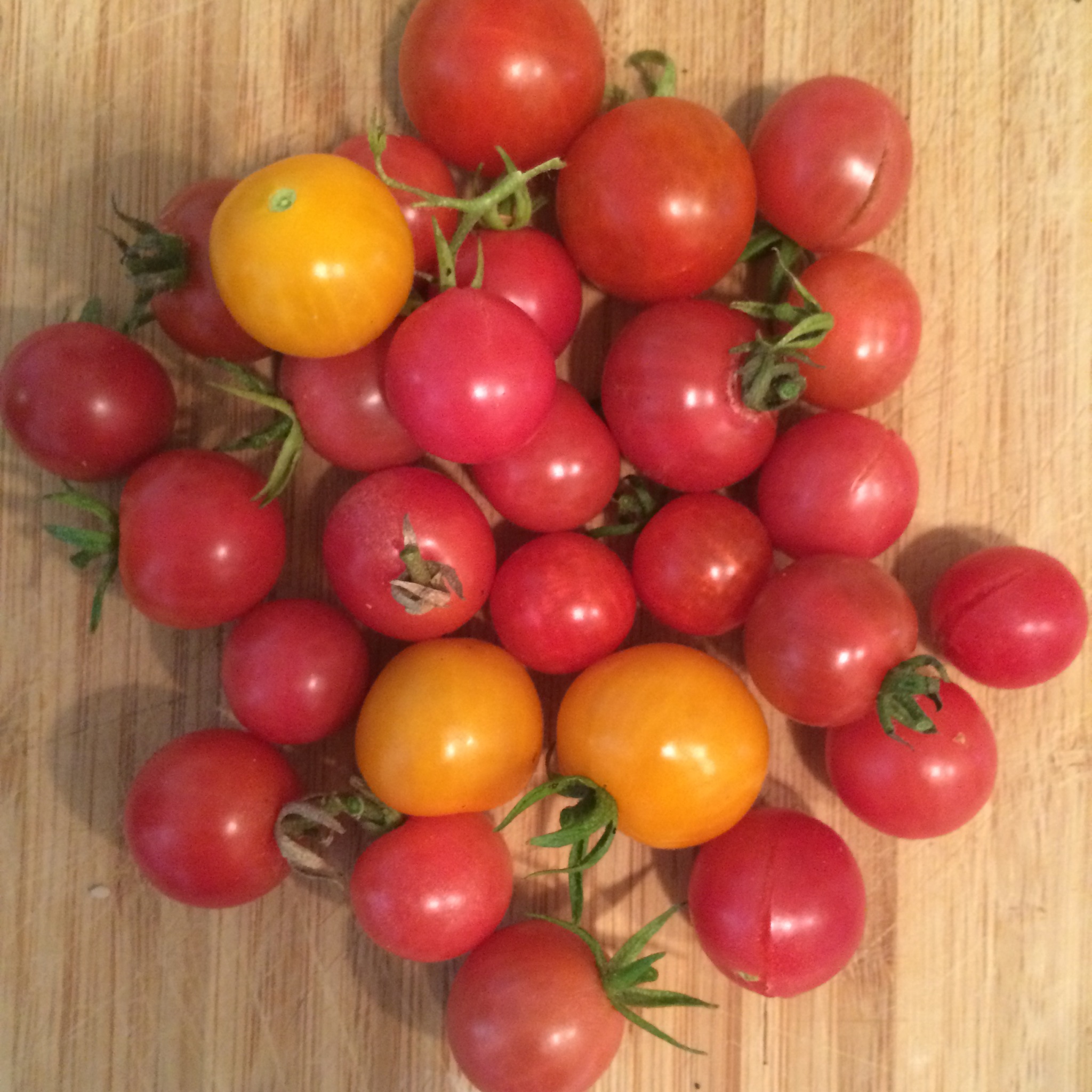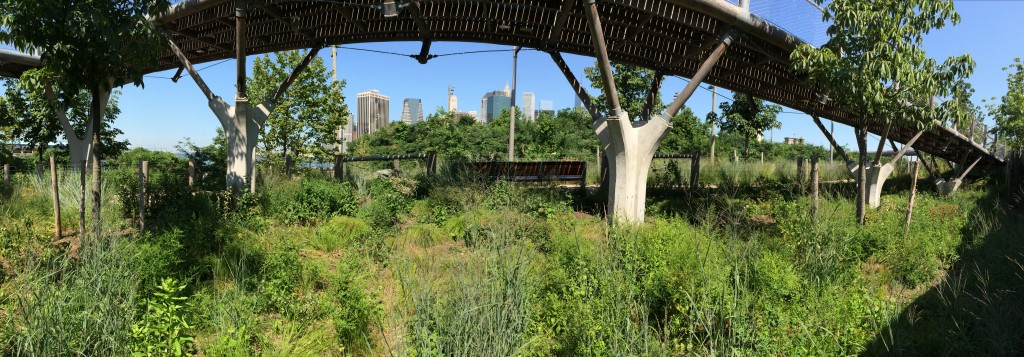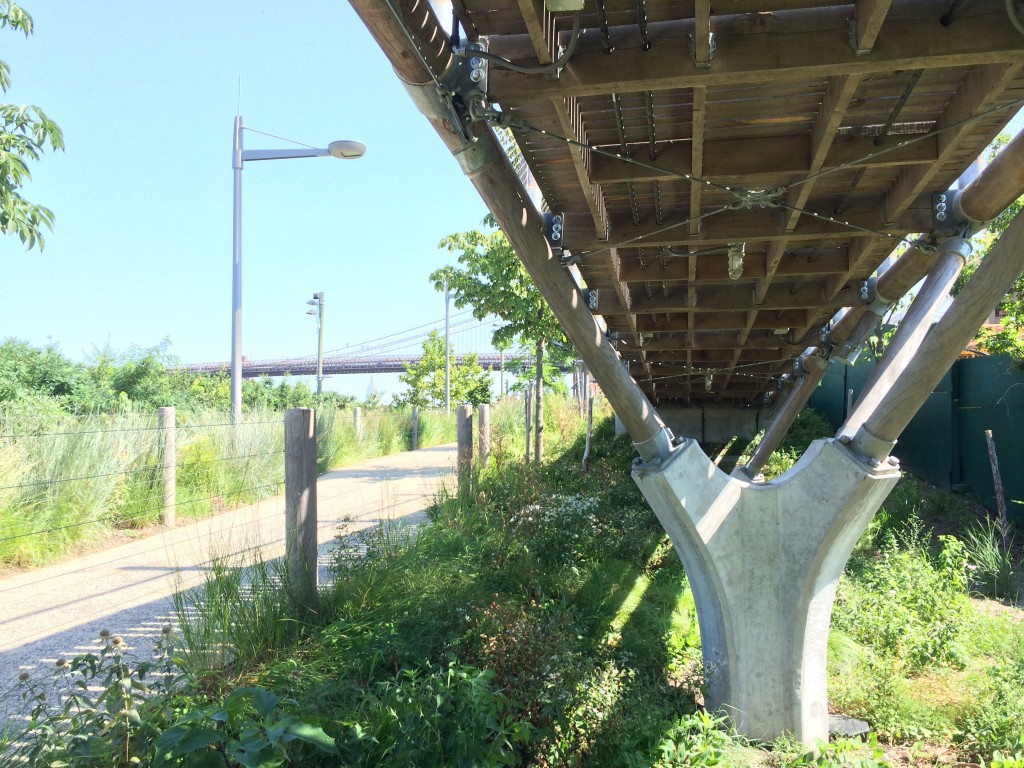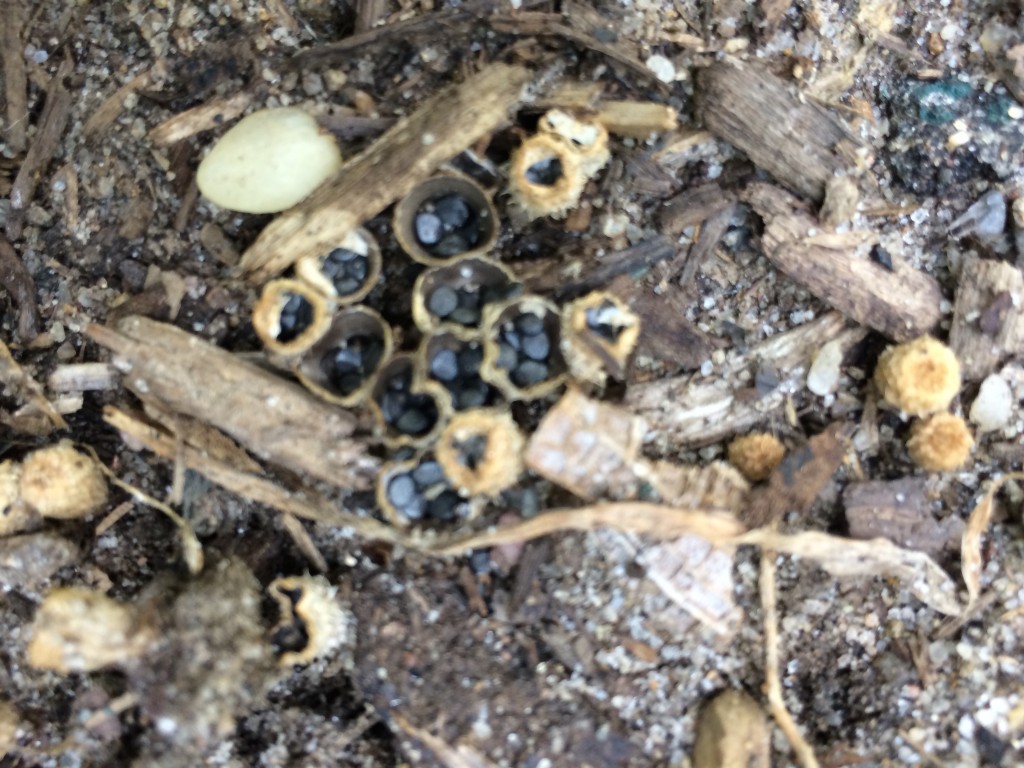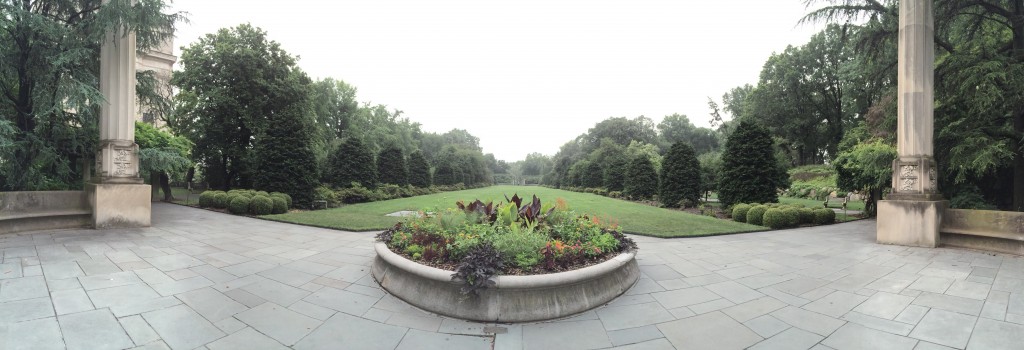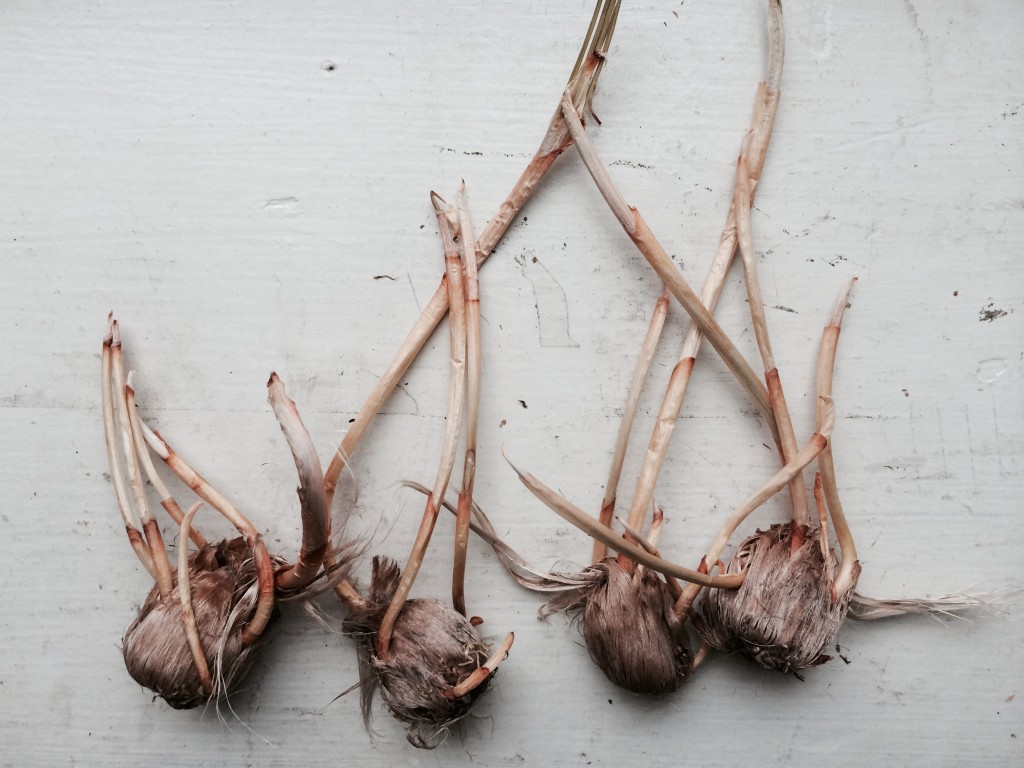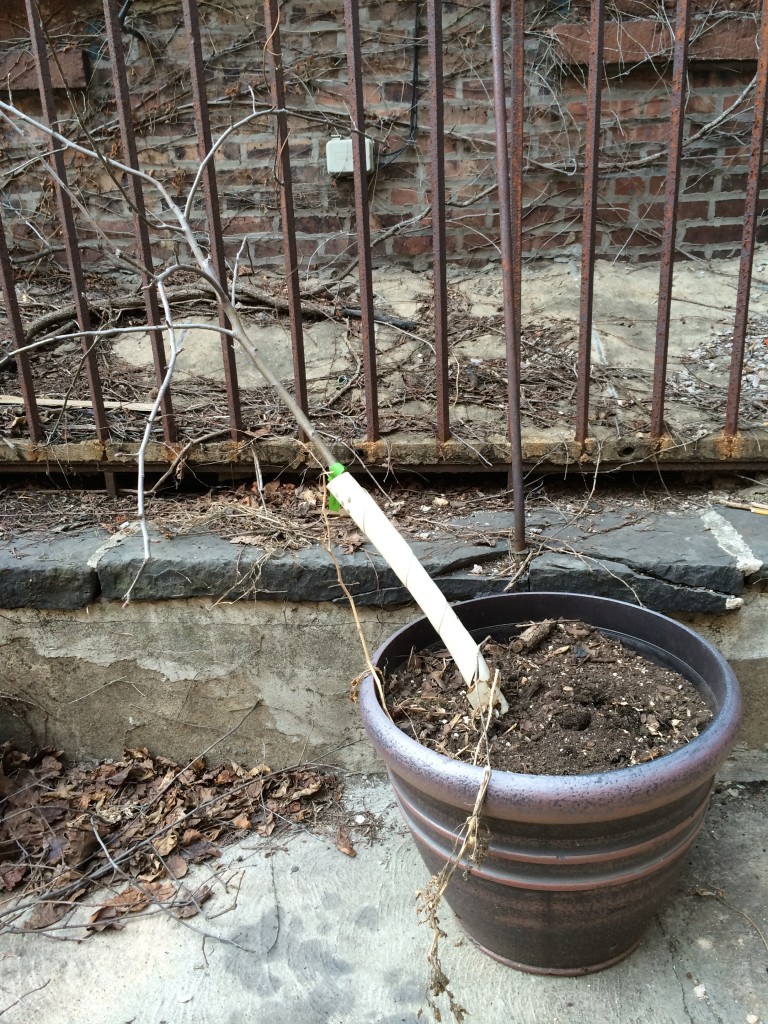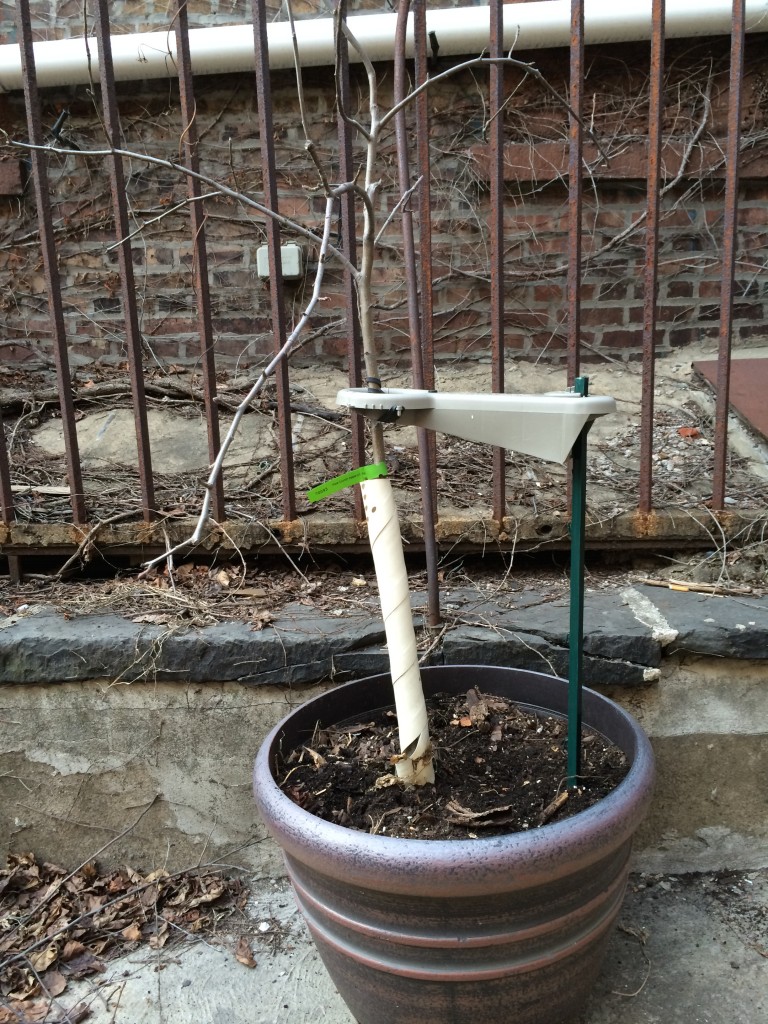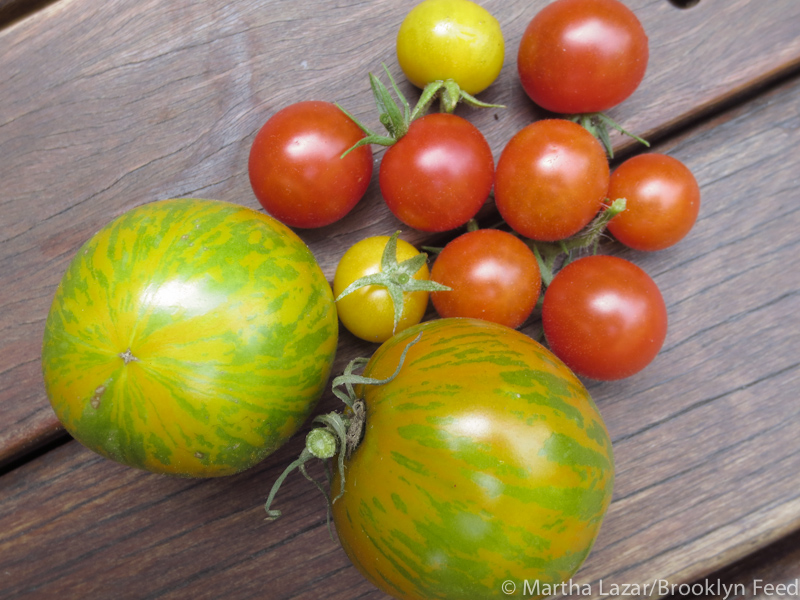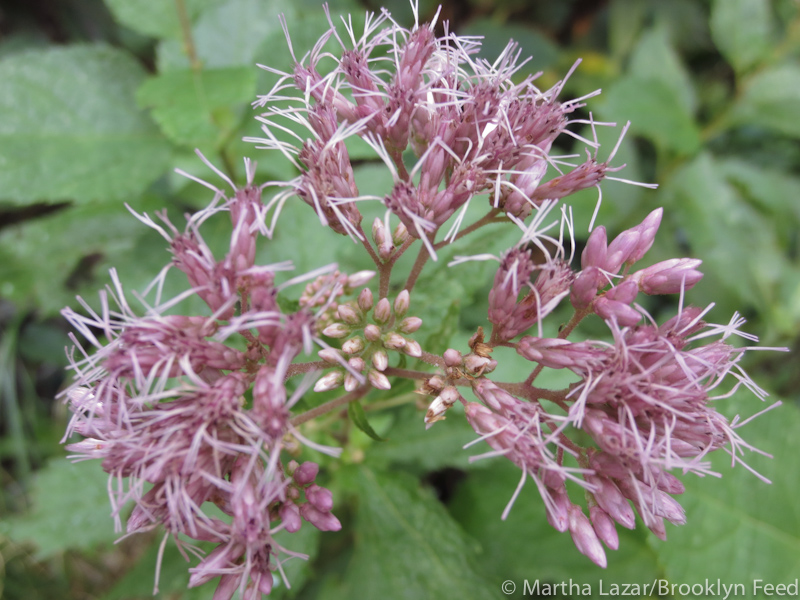On Saturday we went to visit the Cloisters. We had a beautiful Spring day, which was perfect as the gardens at the Cloisters are as stunning as the museum. The medieval artwork was a great mix of stunning and creepy, with several reliquaries to tip the scales towards creepy.
We lucked out and went on their Garden Day, so we were able to hear about one of the lovely gardens. That particular garden was divided into sections including a culinary and household bed, an arts & crafts bed with dye plants (weld, madder, woad, indigo, nettles), a magic bed (deadly nightshade, dragon arum, mandrake), a brewer’s bed (licorice, hops, ground ivy, costmary). In the center of all of these beds were 4 lovely quince trees, and there were espaliered pear trees along the outside walls.
Of course there were the famous unicorn tapestries, but one of the most amazingly detailed piece was this rosary bead. How the artist carved such detail boggles the mind.
The view from the garden shows the protected Palisades.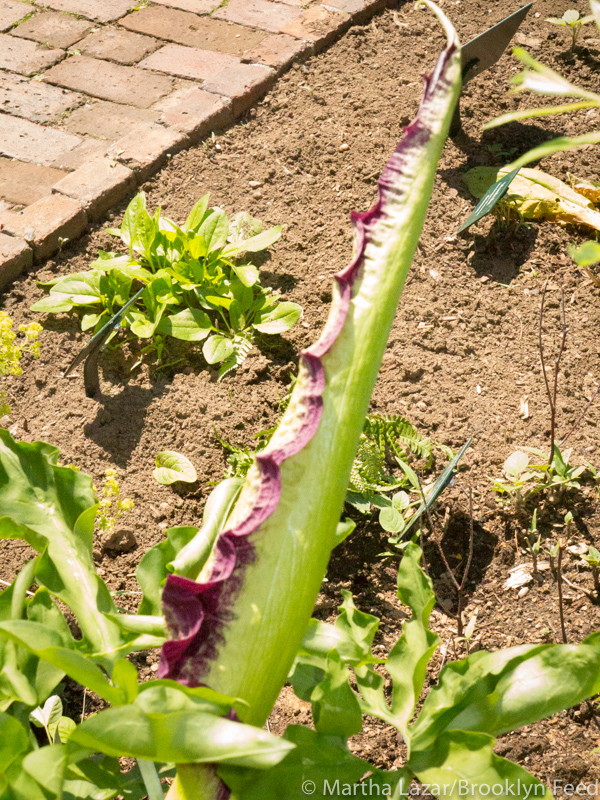 Dragon Arum. This bud was getting ready to open. It was about 2 feet long, and when open smells like rotting meat. It was considered an aphrodisiac based on it’s form. I may be more pure at heart because I thought that the bud really looked like a dragon’s tail.
Dragon Arum. This bud was getting ready to open. It was about 2 feet long, and when open smells like rotting meat. It was considered an aphrodisiac based on it’s form. I may be more pure at heart because I thought that the bud really looked like a dragon’s tail.
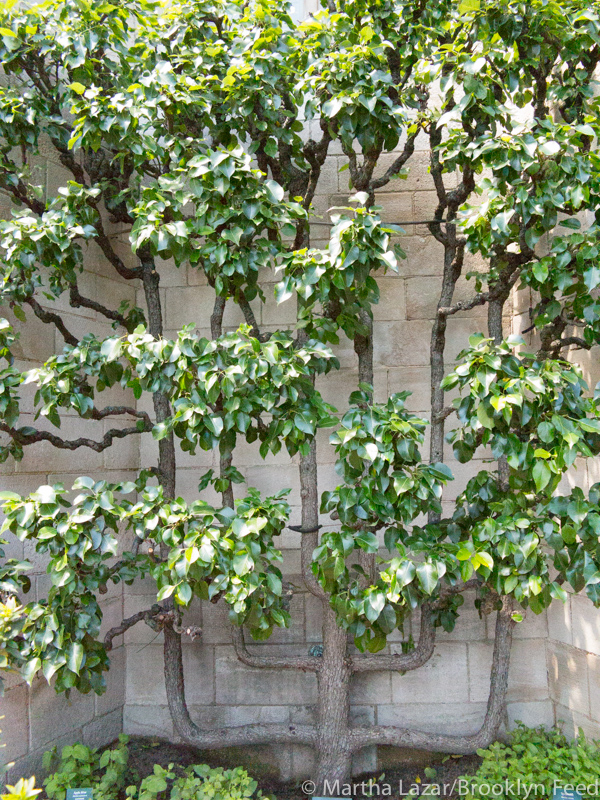 Espaliered pear tree
Espaliered pear tree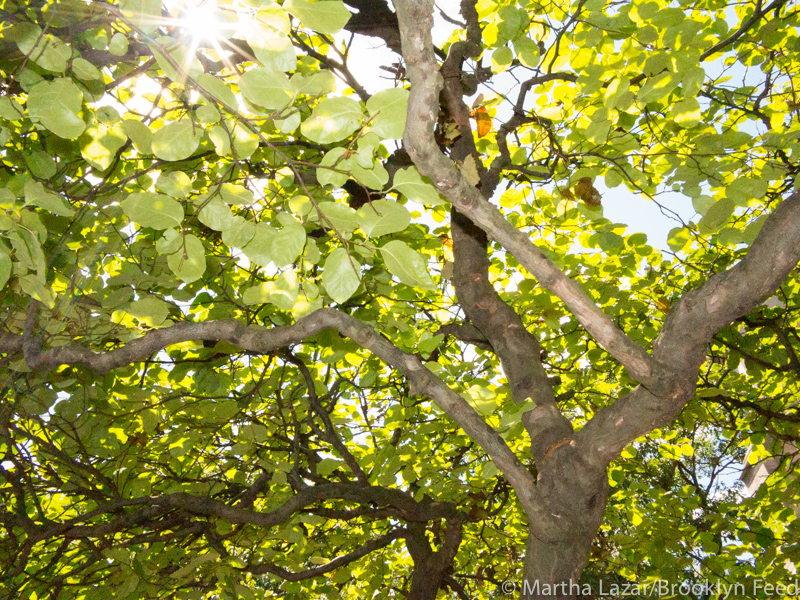 Quince tree
Quince tree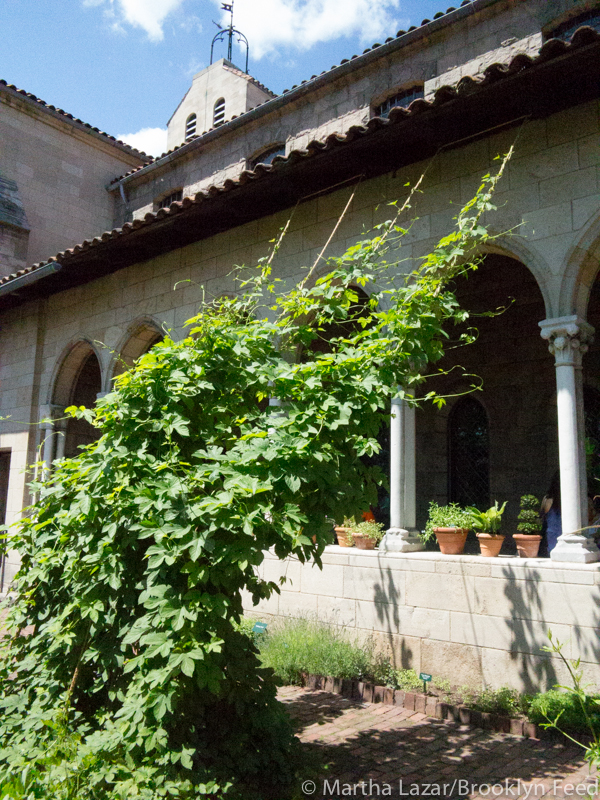 Hops growing in the brewing bed
Hops growing in the brewing bed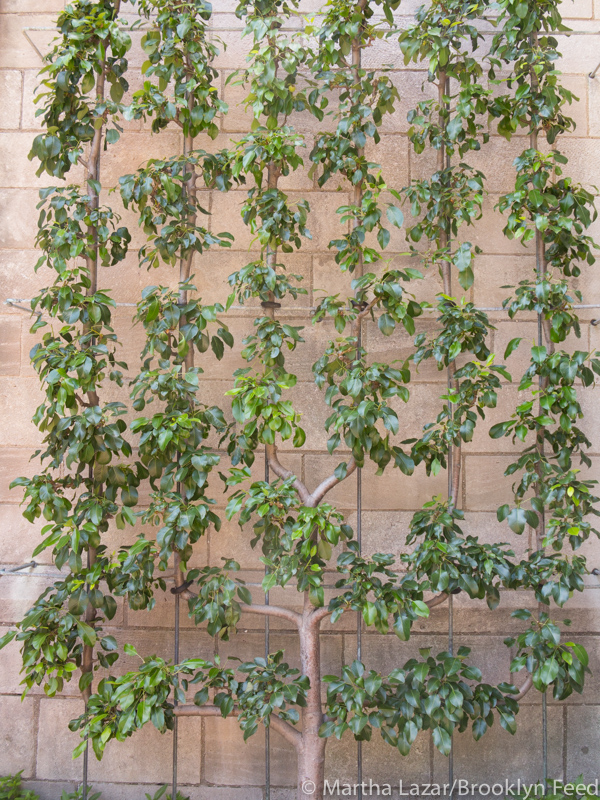 Another espaliered pear tree
Another espaliered pear tree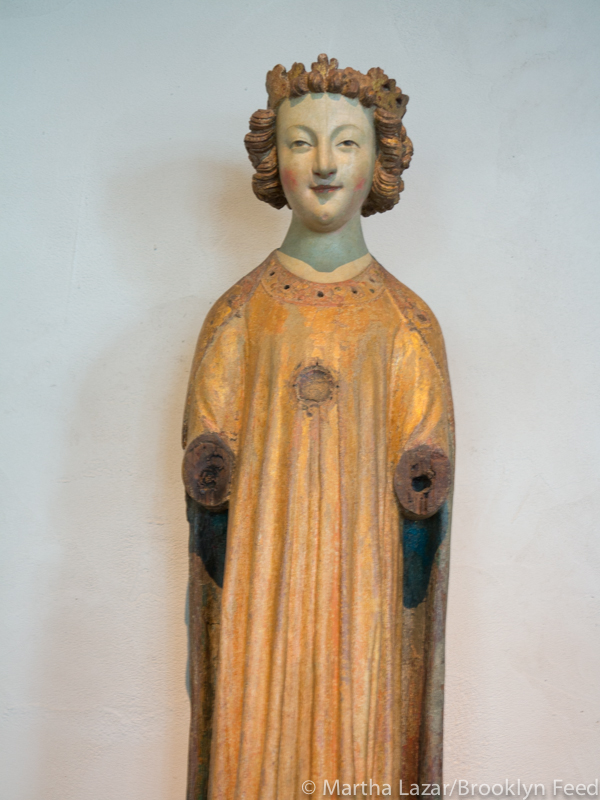
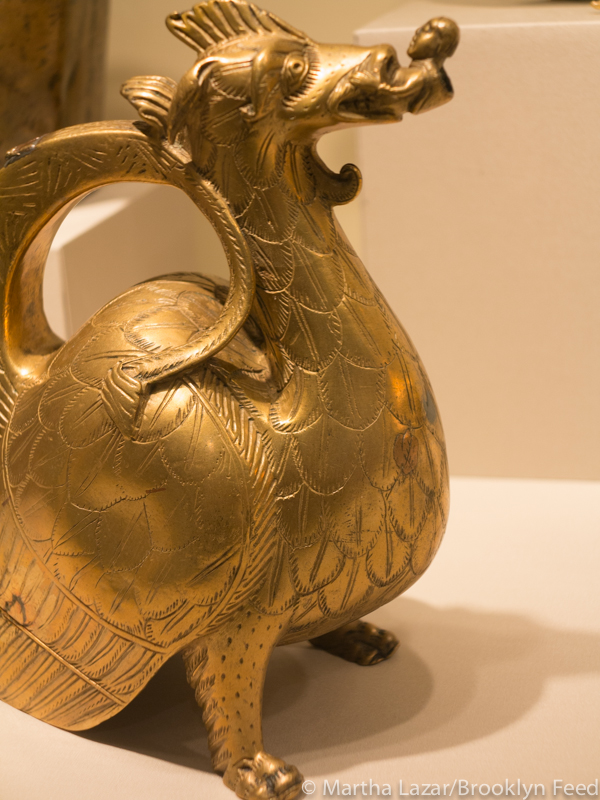 I love this water pitcher. Check out the little man in the dragon’s mouth.
I love this water pitcher. Check out the little man in the dragon’s mouth.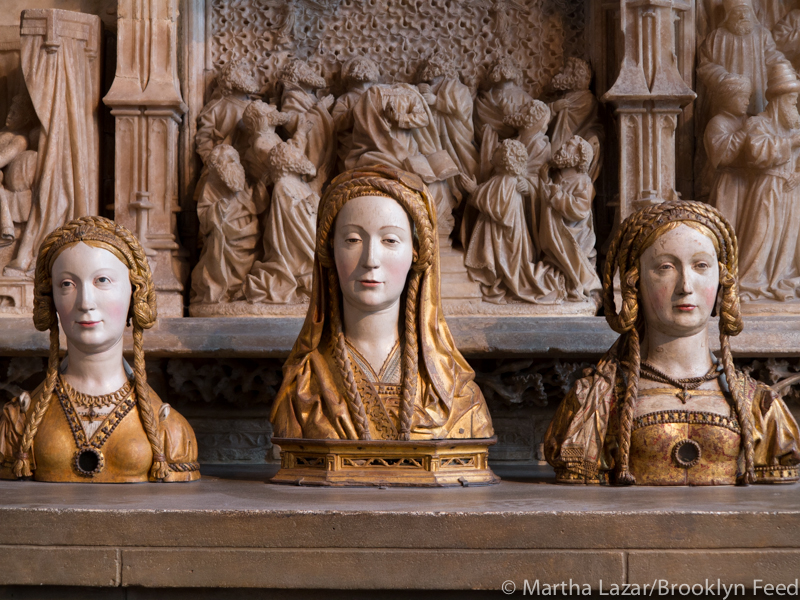 These ladies were reliquaries of saints. The shape of the relic often depicts what it contains. So I guess we’ve got 3 skulls inside. The carving and painting was stunning, but I think their expressions are wonderful.
These ladies were reliquaries of saints. The shape of the relic often depicts what it contains. So I guess we’ve got 3 skulls inside. The carving and painting was stunning, but I think their expressions are wonderful.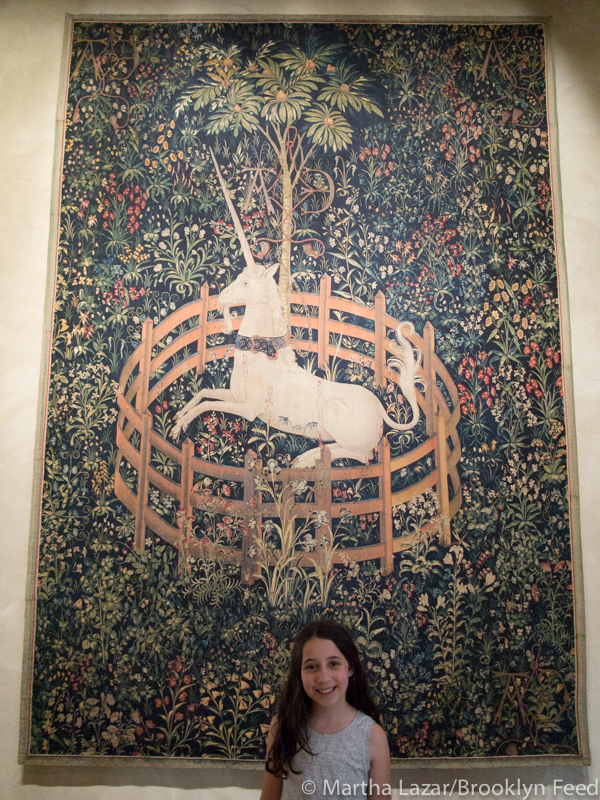 One of the unicorn tapestries.
One of the unicorn tapestries.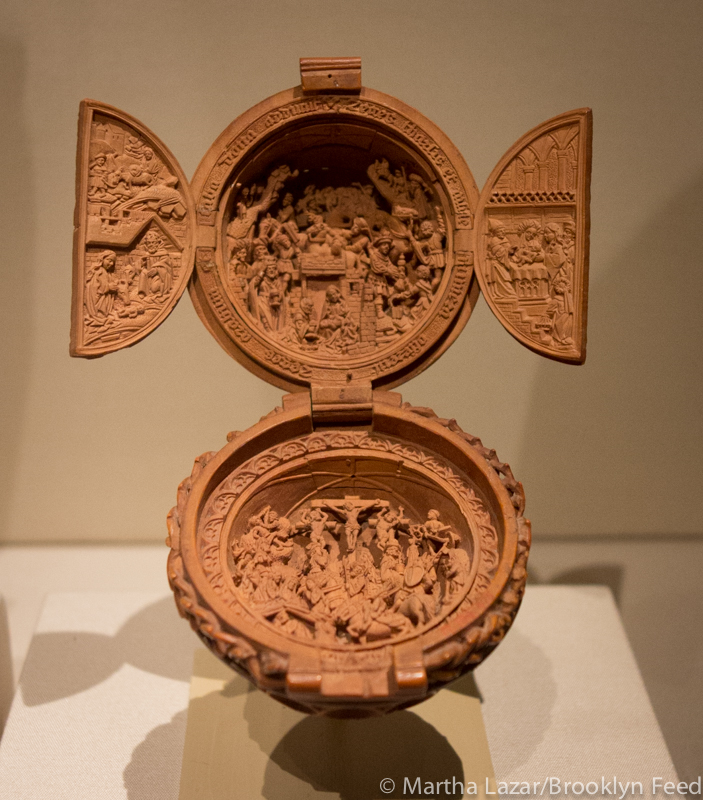 Rosary bead.
Rosary bead. I thought this depiction of Jesus made him look as though he could actually be from the Middle East.
I thought this depiction of Jesus made him look as though he could actually be from the Middle East.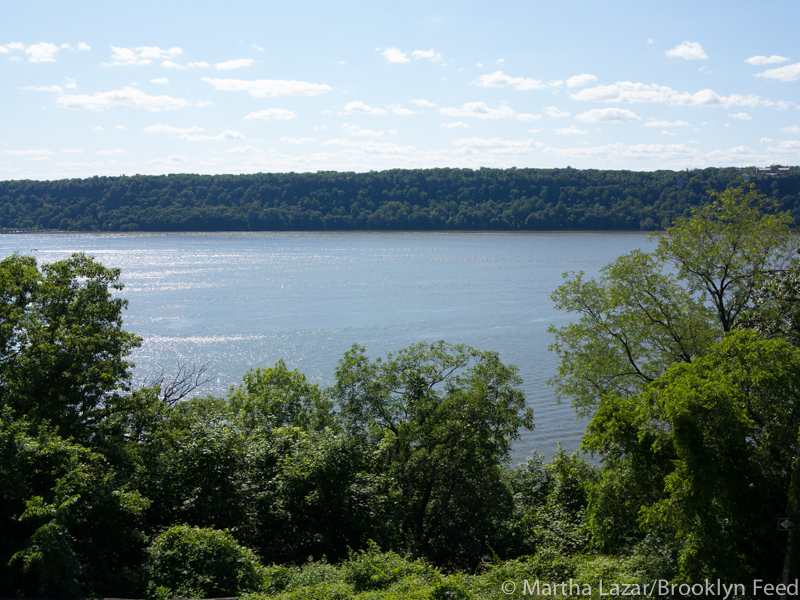 View from the Cloister’s gardens.
View from the Cloister’s gardens.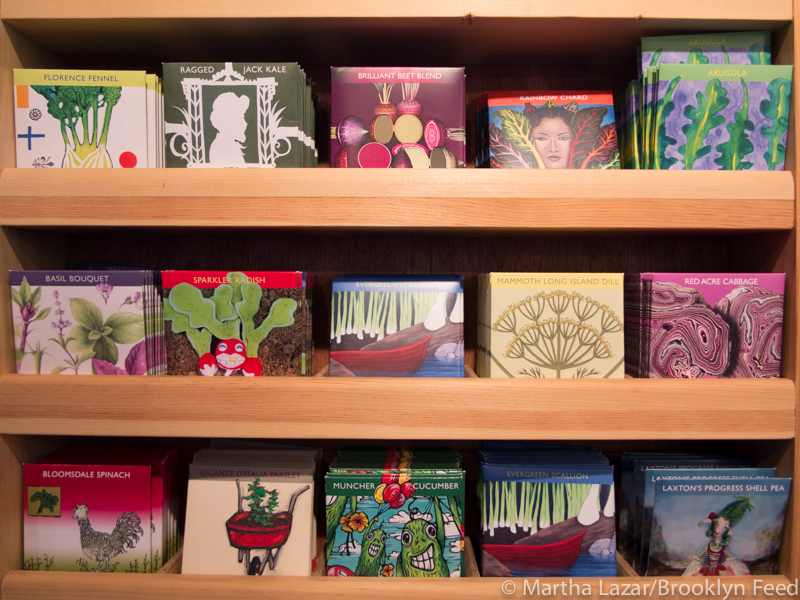 Seed packets in the gift shop.
Seed packets in the gift shop.
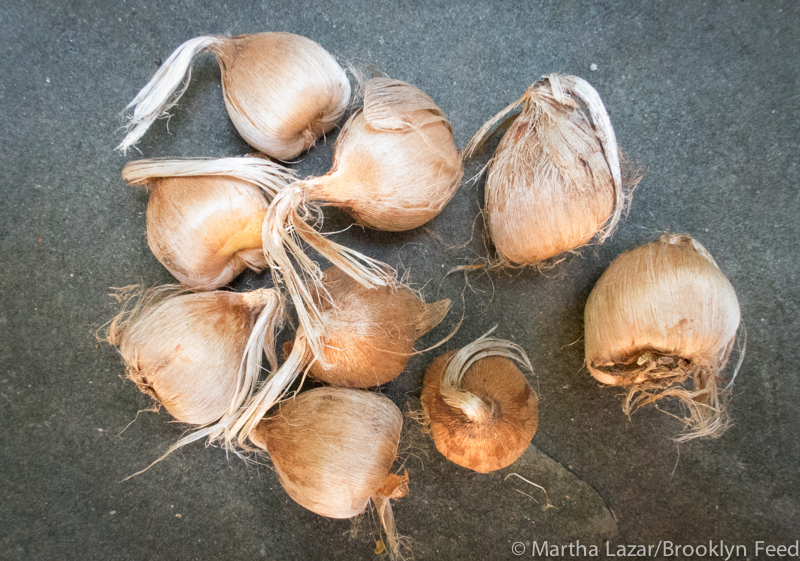 A while back, I wrote a post about planting Crocus sativus in my garden. The original bulbs were a bit dried out, so the wonderful people at Marde Ross & Co. offered to send me replacements in the fall. These were nice, plump beauties.
A while back, I wrote a post about planting Crocus sativus in my garden. The original bulbs were a bit dried out, so the wonderful people at Marde Ross & Co. offered to send me replacements in the fall. These were nice, plump beauties.
